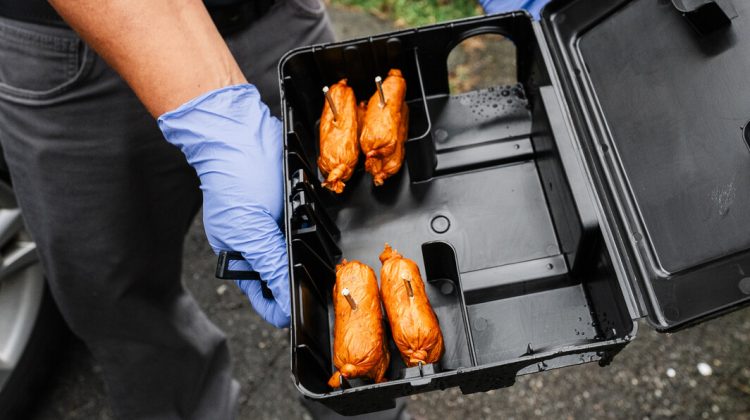SWAMPSCOTT –– SenesTech has begun rolling out its Evolve Rodent Birth Control devices around town as part of its new pilot program to reduce the rodent population without putting pesticides in the environment.
The goal is to implement a solution that segues from the use of Second-Generation Anticoagulant Rodenticides (SGARs), otherwise known as rat poison, which contributes to the deaths of other animals aside from rodents. The company is committed to creating healthier environments by humanely managing animal pest populations through fertility control. The company’s groundbreaking products integrate seamlessly into pest management programs, reducing reliance on traditional poisons.
SenesTech Executive Vice President and Chief Revenue Officer Bryan DiMenna paid a visit to the Fire Department on Wednesday morning, where he walked The Item through the company’s process for the pilot program, explaining what exactly it will entail.
The devices themselves are small black boxes, filled with what resembles uncooked sausages, with the main active ingredient being cottonseed oil, which is a compound that interferes with the reproductive mechanisms of both male and female rats.
DiMenna explained that it’s “super safe for other pets to consume.”
“We don’t recommend eating it. If a child or a bird gets it, there’s no poisonous or toxic effects, nothing,” he said. “Cottonseed oil is active in all non-ruminant mammals (such as humans, pigs, dogs, cats, and horses). … So, could this have an effect on humans? Yes, but the dosage would have to be astronomical.”
DiMenna said the contraceptive is 1,000 parts per million to be effective on rats and mice — so, at that dose, a dog would have to eat roughly three times its body weight several times a day to have any effect on fertility.
“There’s no toxic or poisonous effects, which is great when you’re talking about the biggest problem with SGARs and secondary poisonings,” he said.
He went in-depth explaining how the devices work. Opening from a top hatch, the bait (which consists of ingredients like oat flour, palm oil, and hydrogenated soybean oil) are skewered onto mini posts. The rodents can enter through little doorways on either side, take a nibble, and run out.
DiMenna elaborated, saying that consumption is the biggest indicator of success. In order to gauge how effective the devices are, the company has utilized tracking plates by nearby rat burrows — a mixture of black chalk and ethanol — which helps measure the amount of prints of the rats in the area.
In a prior study on the matter in Chicago, four months went by, and there were reports of reduced burrow activity, sanitation workers reported seeing fewer rodents, and even businesses reported seeing less rats around –– which resulted in the company seeing a 60-70% reduction in rodent sightings.
He continued, explaining that if the devices are placed closer to the sites of burrows, it can have an impact on seeing rats venture out further to find food. He noted that during the company’s previous work in Chicago, they found the rats stay more localized rather than spreading out in streets, alleyways and restaurants.
“All of that gets correlated to a numerical score. From there, it goes to our scientific staff in Phoenix, Arizona, and they do statistical data modeling on it,” he added, saying the analysis helps determine the baseline population, and the reduction so far.
When asked how many devices would be placed throughout town, DiMenna noted, “as many as the Town will want,” and that to be effective, the company would like to place a device every 50 to 75 feet.
“It’s a technology that works, and we just wish people would adopt it because not only is it non-lethal and non-poisonous, it’s the only technology that works to control rat populations,” DiMenna said. “We’re doing trials all over the world, and everywhere that we’ve done a trial, people have used the product effectively. … We’ve had success in every single case.”





